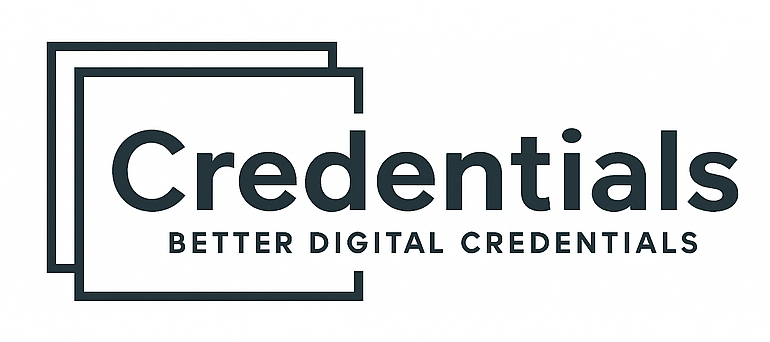Education and the world of work are experiencing a turning point. Rapid technological change, the globalization of markets, and the growing need for lifelong learning have transformed how skills are acquired and validated. In this context, digital microcredentials have emerged as a practical response to the demand for flexibility, portability, and trusted verification.
What Are Microcredentials?
Microcredentials are verifiable digital certifications that recognize a specific skill, competency, or achievement. Unlike traditional diplomas that cover longer study paths, microcredentials certify modular and concrete accomplishments tailored to immediate labor market needs.
They include metadata that provides transparency and details such as:
- Issuing institution.
- Skill or competency certified.
- Evidence of achievement.
- Date of issuance and validity.
This makes them more reliable than paper or PDF certificates and easier to share on LinkedIn, digital portfolios, or institutional apps.
Global Trends and the Shift to Modular Learning
The traditional educational model based on long degrees now coexists with flexible, modular learning pathways promoted by universities, companies, and governments.
International organizations such as OECD, UNESCO, and the European Commission highlight microcredentials as essential to closing the gap between education and employment.
- In Europe, frameworks like Europass already integrate microcredentials into a shared ecosystem that fosters labor mobility.
- In Latin America, governments and higher education networks are beginning to adopt them to boost employability and trust in digital education.
- In North America and Asia, corporations use microcredentials to upskill and reskill their workforce.
This growing adoption reflects a global demand: people need to demonstrate specific, up-to-date competencies that evolve alongside industries.
Benefits and Challenges
Benefits
- For learners and professionals: dynamic, verifiable digital portfolios.
- For educational institutions: curriculum innovation aligned with job market needs.
- For companies and governments: trusted validation of workforce competencies.
Challenges
- The need for international standards to avoid fragmentation.
- Ensuring equitable access across regions.
- Building trust among employers and institutions in a crowded provider landscape.
Key Platforms in the Digital Credential Ecosystem
The digital credentialing landscape is diverse, with multiple global platforms leading adoption:
- Credly (U.S.): one of the pioneers in digital badges, widely adopted by multinational corporations.
- Accredible (U.S.): with strong integrations in e-learning and professional certification markets.
- Badgr / Concentric Sky (U.S.): a key promoter of the Open Badges standard worldwide.
- Open Badge Factory (Finland): focused on the European education sector and open standards.
- POK Proof of Knowledge: founded in Latin America and now operating globally, it stands out as one of the first platforms to integrate blockchain and NFTs for tamper-proof, portable, and permanent digital credentials.
Each of these platforms brings different approaches, but all share a common objective: connecting learning with employability on a global scale.
Critical Capabilities for Digital Credential Platforms
Beyond technology, institutions should evaluate core capabilities when selecting a credentialing platform:
- Interoperability: credentials must be recognized across systems.
- Portability: learners should own and carry their credentials for life.
- Privacy and compliance: alignment with GDPR in Europe and local privacy laws.
- Integrations: seamless connection with LMS, CRMs, and open APIs.
- Credential marketing tools: enabling graduates to share achievements on social platforms.
- Learning pathways: linking microcredentials into broader academic or professional routes.
POK has been recognized in international forums for combining blockchain innovation with global standards, creating trust for governments, universities, and enterprises.
The Role of Standards in Building Trust
The value of microcredentials depends largely on standards and interoperability.
- Open Badge (1EdTech) versions 2.0 and 3.0 ensure that credentials can be issued on one platform and recognized on another.
- Europass (European Union) allows credential portability across Europe.
- Blockchain adds transparency and security against fraud.
POK, for example, was among the first platforms in Latin America to adopt Open Badge 3.0 and combine it with blockchain, strengthening the validity and longevity of every credential.
A Future of Global Digital Portfolios
The rise of microcredentials points to a future where traditional CVs will be complemented by dynamic, verifiable digital portfolios.
In this scenario:
- Recruiters will validate skills instantly.
- Educational institutions will design personalized learning pathways.
- Professionals will carry a lifelong record of verified skills.
Microcredentials are evolving from a niche innovation into a global standard for academic and professional recognition.
Conclusion
Microcredentials are not just a technological tool—they represent a new language of skills in a world where learning never stops.
The ecosystem is broad, with platforms like Credly, Accredible, Badgr, and Open Badge Factory driving adoption in different regions. Yet examples like POK, which integrates global standards with blockchain and NFT innovation, show how technology can add new layers of trust, transparency, and permanence.
The challenge now is to build an open, trusted ecosystem where every individual can own and showcase their skills across borders—connecting learning with new opportunities anywhere in the world.

